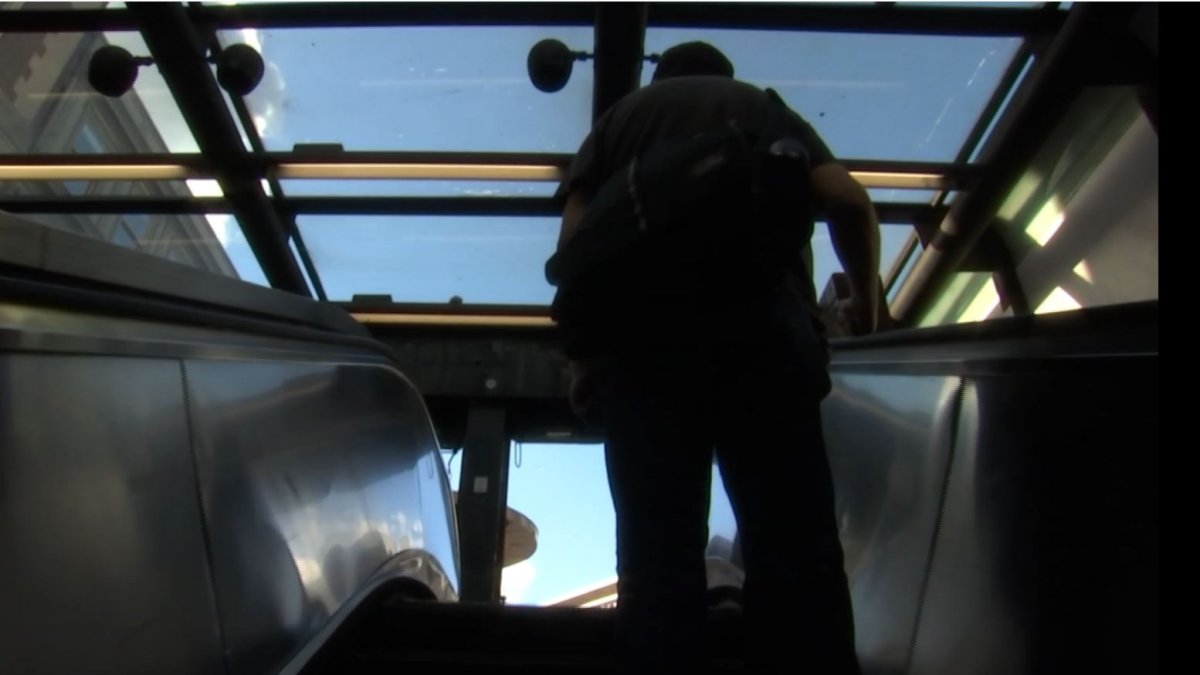MBTA Hopes to Lift Remaining Orange Line Slow Zones In Coming Days
Looking at transitmatters' data, here is the current status of each of the defined slow zones that were in place to start the week:
- Wellington -> Assembly: Mostly lifted last Friday (3.6 minutes -> 1.6 minutes), but still slower than pre-shutdown (1.0 minutes).
- Assembly -> Sullivan: Briefly mostly lifted last Friday morning, before returning (3.3 minutes -> 1.2 minutes -> 3.3 minutes), but even that was slower than pre-shutdown (0.8 minutes).
- Sullivan -> Community College: Briefly lifted last Friday morning, before returning (5.2 minutes -> 1.4 minutes -> 5.2 minutes), which matched pre-shutdown (1.4 minutes).
- Community College -> North Station: Briefly lifted last Friday morning, before returning (2.2 minutes -> 1.5 minutes -> 2.2 minutes), which matched pre-shutdown (1.5 minutes).
- Chinatown -> Tufts Medical Center: Yet to be lifted (1.1 minutes) compared to pre-shutdown (0.4 minutes).
- Tufts Medical Center -> Back Bay: An existing slow zone (1.2 minutes -> 2.8 minutes) that was partially lifted last Friday (2.5 minutes).
- Mass Ave -> Ruggles: An existing slow zone (0.9 minutes -> 1.2 minutes) that was lifted yesterday evening!
- Jackson Square -> Stony Brook: A new slow zone post-shutdown (1.1 minutes -> 3.0 minutes) that was mostly lifted last Wednesday (1.4 minutes), before finally being fully lifted yesterday afternoon!
So, some progress was made yesterday, but six slow zones remain (three slow zones if you count Wellington -> North Station as one big slow zone).
Thank you for this! I wanted to do a deeper analysis than what I gave yesterday - just like this - but work got in the way yesterday and today.
It's good to see at least some progress on some of the slow zones but it's clear they still have some work left. I'm off work tomorrow and might make a spreadsheet comparing the times between every stop.
For now since I'm exhausted, out of curiosity, I looked at times in the opposite direction to your analysis...
Stony Brook to Jackson Square: was lifted last week. Existing slow zone was 2.2 minutes pre-shutdown and remained as such initially post-shutdown, before going to 1.1 minutes
Ruggles to Mass Ave: Still considerably slower than pre-shutdown, though was partially lifted today. Was just under 1.3 minutes pre-shutdown, then went to about 2.8 minutes before dropping to 2 minutes today.
Back Bay to Tufts: As I noted yesterday, this is considerably faster than pre-shutdown. Ran at about 2 minutes before, was at about 1.9 minutes initially post-shutdown before going to 1.4-1.5 minutes in the last several days. This segment ran at 1.2 minutes back in 2018 so it's not perfect, but still a notable improvement in this direction.
Tufts to Chinatown: Ran just shy of 0.5 minutes pre-shutdown; now is at about 1.3 minutes and has not budged through 10 days.
North Station to Community College: This segment ran in the neighborhood of 3.5 minutes, with fluctuations of +/- ~0.2 minutes, pre-shutdown. The pre-shutdown slow zone here was instated on July 28; prior to that it ran consistently at ~1.5 minutes. Post-shutdown, it initially ran at about 3.7 minutes, then went down to 2.8 minutes on Friday... before the median went
up to over 3.2 minutes today.
Community to Sullivan: Ran at 1.8 minutes pre-shutdown, though this was a slow zone; prior to the slow zone being instated on July 21 it ran at about 1.3 minutes. Went up to 5.2 minutes post-shutdown and has stayed at that level since.
Sullivan to Assembly: This area was subject to a slow zone in the spring that got mostly corrected, and then another (slightly less egregious) one was instated but fully corrected a few weeks before the shutdown. This led to a travel time of just under 0.9 minutes pre-shutdown. Post-shutdown, it is running just below 3.3 minutes.
Assembly to Wellington: Travel times were just under 1.0 minute pre-shutdown; post-shutdown, it initially ran at about 3.7 minutes, before going down to (and staying at) just under 1.4 minutes on Friday.
TL;DR: They're still lying about some of the slow zones beyond that magical North Station to Assembly zone going northbound, too. And in that NS-Assembly range, I have so, so many questions for them.


